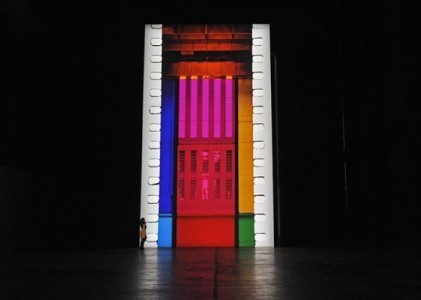Moments of 2011, Part 2
Continuing our annual tradition, we invited some of our regular contributors and colleagues, as well as a few writers and artists, to select their moving image moment or event of 2011—anything from an entire movie or TV series to an individual scene or shot, from a retrospective or exhibition to a news story or viral video. Part 1 of the survey can be found here; part 2 follows.
David Schwartz, chief curator, Museum of the Moving Image
For the Museum of the Moving Image, this was a year of curtain-raising…and what a curtain! Designer Cindy Sirko’s kaleidoscopic computer-age patchwork quilt perfectly complemented the glowing spaceship aura of architect Thomas Leeser’s main theater, an enveloping and transporting space for cinema that felt inspired by one of the films we showed on opening day in January—a 70mm print of Stanley Kubrick’s 2001. My very first childhood memory of moviegoing (to see Mary Poppins) consists not of the movie, but of the feeling of awe when I entered the theater, which was a standard single-screen movie house in Plainview, Long Island. The big white screen looked enormous, inviting, and magical.
The Moving Image theater creates that same sense of wonder, but with world-class architecture. And the year itself, in Astoria, was filled with so many great moving image moments: a dazzling restored print of Touki Bouki was a highlight, along with the stunning beauty of Coraline in digital 3-D, a delightful screening of John Ford’s Upstream with a quintet led by Donald Sosin, Alain Resnais’s magnificent documentary Toute la memoire du monde, and some great nights with filmmakers such as James Gray and The Yards, Alex Ross Perry and The Color Wheel. Beyond that, Ken Jacobs’s Seeking the Monkey King was my favorite film of the year—a poetic, political film experience both intimate and epic, and great on the big screen. The Museum’s new theater helped remind us of three simple words—the name of a popular new ongoing series—at the core of the cinema experience: See It Big!
Raya Martin, filmmaker
Peter Sutherland's enduringfreedom.gif. Because it's the year of America (again), and its upgraded/uploaded nationalism is 587 x 404 pixels. Goes well with any drug, whichever the people want.
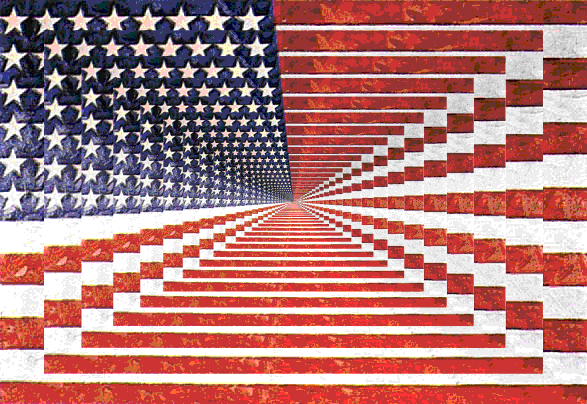
Michael Sicinski, critic
As most outlets were wrapping the Year in Media, a bombshell: the death of North Korea's "Dear Leader," Kim Jong-il. We received the news in a much puzzled-over piece of Deep Communism, an official report read by a weeping TV anchor. So incongruous, so fundamentally Other was this clip—not only to our knowledge of Kim as an oppressive tyrant, but to our very concept of how news media are supposed to function. (Even Cronkite tearing up over the slain Kennedy seems remote to us now. In any of the post-industrial democracies, we'd expect half the press to be not-so-secretly happy about a felled leader.) Is this woman brainwashed? A brilliant actor? Or is she just accessing a level of faith in government (of any kind, however misguided) that most of us have either lost long ago, or never even knew?
Abel Ferrara, filmmaker
Pretty obvious: "Sag My Pants" by Hopsin
Leah Churner, archivist and curator
Tie: Miranda July's The Future / LMFAO's "Sexy and I Know It"
2011 was a great year for Video Response dancing! In The Future, Miranda July fails to post her own "sexy" dance video on YouTube, but redeems herself in a surrender to asexual weirdness in her elegiac T-shirt dance to Beach House's "Master of None." Meanwhile, LMFAO's meta-rap-video "Sexy and I Know It" moves in the opposite direction. Rapper Redfoo (Stefan Gordy, who is the same age as July) gazes into a compact mirror, strips down to a Speedo, and jiggles his crotch in slow-mo close-up. He is joined by his nephew, SkyBlu (Skyler Gordy), and Ron Jeremy. This may not be the first video to "invert the gaze" and objectify the male body, but it may be the most brilliant. The more I watch it, the more I'm convinced that LMFAO are only about 35 percent joking. And if you search on YouTube, you'll stumble into a pretty amazing feedback loop of video responses. Wiggle, wiggle, wiggle, wiggle, wiggle, yeah!
Phillip Lopate, critic and essayist
The high point of the year, cinematically, was seeing the four-hour Edward Yang movie, A Brighter Summer Day, at the Elinor Bunim Munroe Film Center. I thought it was not only the best film released this year but one of the best of the past 25 years. The irony is that I had voted to reject it the first time I saw it, when I was serving on the New York Film Festival selection committee. It had been sent to us on a poor video transfer and I could not make heads or tails of the story. So I voted nay. Over the years I have felt intensely guilty for having done this, especially after reading in film magazines about what a masterpiece it is. Then Yang died, and I felt like I had his blood on my hands (such is narcissism). So of course I was more than willing to be enthralled, and the film was fortunately as great as I had hoped. Then I ran into Richard Peña, the NYFF director, at a friend's son's bar mitzvah, and Richard informed me that the tape sent to us was a mangled three-hour version and indeed made no sense and Yang hadn't wanted it to be shown! He spent years trying to get the full four-hour version put together. So I did not kill him after all. Anyway, an astonishingly beautiful movie.
Kevin B. Lee, critic and filmmaker
Once in a while a moviegoing experience has you wondering about everything it took to make it possible. For me it was catching Margaret on the last day of its one-week run in Chicago last October. I hadn't heard of the film until that day; a flurry of "Last chance to see Margaret in the theater!" tweets by a vocal New York contingent struck the medullar region of my cinephile brain. I changed my evening plans, a negligible inconvenience compared to the well-documented travails Kenneth Lonergan and his crew endured to get the film released, though in a version that reportedly less than fulfills Lonergan's vision. Knowing the backstory, with most of the film shot over half a decade ago, cast a filter on my viewing experience, like sifting through the wreckage of a crash site years after the fact. But this forensic vantage point gave way to something more immediate: the fury and confusion of Margaret's quest for justice—no doubt resonant with Lonergan's odyssey in seeing his film through—and how all her toil simply brought more trouble to her world and more alienation from all those around her. The more she suffered, the more I connected with her and the other five people watching the film; who knows what brought them there, but given the years of circumstances that could have kept us from sharing this moment, it felt like a miracle. When Margaret finally connects with someone, embracing her mom—spontaneously, against all odds and sense—in their theater packed with strangers, our empty theater seemed to swell.
Florence Almozini, program director, BAMcinématek
I am picking Drive and specifically the opening sequence as my movie moment of the year:
Ray Pride, Movie City News
The moment of realization: I'm sure there are dozens of them in movies small and large this past year, but at least three extended silent pauses struck me hard while mulling 2011.
In David Fincher's The Girl With the Dragon Tattoo, Rooney Mara attains the role of Lisbeth Salander as Daniel Craig's Mikael Blomkvist says, "I want you to help me find a killer of women." The camera holds on the slightest lift of her chin on hearing those words, the coldest fire in her eyes, as she matches his look.
Elle Fanning in Super 8: the nocturnal filmmaking adventure gone explosively wrong, a welter of confusions between the boy behind the camera and the girl in front of it, which almost make up for the rest of the movie. (Anthony Lane went appropriately bonkers over the sequence.)
In Drive, the unnamed driver (Ryan Gosling) meets a young mother (Carey Mulligan) in his picturesquely shabby apartment building, where he's behind the door of apartment "405." It's the small, tingling grace notes that elevate Drive into what Refn claims it is, or the cinephilic repository that it also is, such as the first meeting of the man and woman in the building's elevator, two unmatched gazes, seeing, not seeing, each other. And once they've met, when she asks where he works and he answers, "Reseda Boulevard," and Gosling stretches those syllables into something abstract and lyrical along his tongue, and in an ideal cut, Refn cuts to Mulligan indicating, yes, in this very second she may have well opened up to the possibility of loving this man. An awareness: this is a moment. I am in this moment. Not this is history, this is my destiny, but an engaged gaze that says: I am in this moment. Are these the briefest of feminine/female pauses in the maelstrom of masculine fantasy? Or yet more masculine projection? Still, it's a breath, gratefully given, gratefully taken.
Eric Hynes, critic
It's precisely because The Interrupters is so allergic to clichéd notions of redemption and uplift, so responsibly attuned to the fact that there are no easy ways out of the societal and psychological labyrinths set before its subjects, that a minor, brief, late-film revelation became the year's most cathartic moment in cinema. When he's introduced, the young man who goes by the name "Flamo" is teetering in a doorway belting a revolver and wildly threatening revenge. He's lean, mean, dangerously strung out, and on the verge of murder or death—likely, or at least eventually, both. He's intercepted by Cobe Williams, a violence interrupter who knows enough of Flamo's predicament to gain his trust, and enough of a better life to suggest another way forward, at least for this one day. There are dozens of moments like this in the film. Sometimes a member of Chicago's Cease Fire crew gets there in time, just as often one doesn't. Some people resist the pull of gang violence, others can't. So when Flamo later appears as a clean-cut, soft-spoken, gratefully employed transit worker, the payoff is overwhelming. His triumph is unlike any other I can recall in film—the two audiences I saw it with responded to the sight of him in a CTA uniform as if Rocky had just toppled Drago. It's not a Hollywood or any other kind of ending, but rather simply, and hugely, a new chapter for someone who's found the will, for now, to give himself a chance. We know what could have been, and from the alert, tentatively determined look on Flamo's face, it seems he does too.
Geoff Andrew, head of film programming, BFI Southbank
There were many terrific moments in many terrific films: the appearance of the village mayor's daughter in Once Upon a Time in Anatolia, the rescued-by-Rover race in The Artist, the complex ethical discussion in the absurdly cramped room in Footnote, and the closing shot of José Luis Guerín's final filmed letter in his Correspondence with Jonas Mekas, to name but a few.
But one that I particularly liked and would like to mention was in a fairly unheralded and modest documentary called Darwin, made about the tiny, titular Death Valley township by Nick Brandestini. Brandestini for the most part simply lets Darwin's often faintly eccentric inhabitants tell us their stories, and at one point a now almost elderly couple journey out of town to visit the site of a long abandoned ranch. Recalling its former inhabitant, the woman confesses to the camera that she's "mixed about Charlie." Her husband, laughing, professes himself not entirely in agreement. Hardly surprising: we, surely, could never feel "mixed" about Charles Manson! But it's a measure of the sheer humanity of Brandestini's film that we don't find this woman, or any of the other folks living in Darwin, so alien as to be grotesque or incomprehensible. He has taken the time to get to know them, and the properly sympathetic curiosity that motivates his movie ensures that we get to understand and like them a little too.
Dennis Lim, editor of Moving Image Source
One song, two films, ghostly resonances. The girl still can’t help it.
Michael Glawogger, filmmaker
For me the highlight of the year was the Jay Rosenblatt Retrospective at the 19th International Film Festival of the Art of Cinematography, Plus Camerimage. Two hours of precise, entertaining, and intelligent filmmaking at its best. A tension between sound and images that makes it worthwhile to rethink the language of narrative and documentary filmmaking, like in the excerpt of Human Remains where he uses a fake inner voice with a documentary-style voiceover, through which he creates an authentic inner vision of dictatorship.
Nicole Brenez, critic, teacher, and programmer
My event of the year is the subtitling in English of three films shot by the Dean of French Engaged Cinéma, René Vautier: Afrique 50 (1950), Le Glas (1964), and Frontline (1976), three masterpieces of anti-colonialist style. The subtitles were made for scientific purposes by Peter Kirkpatrick, Françoise Kirkpatrick, and their students of the VCU, Richmond, Virginia. René Vautier, born in 1928 and still at work, has shot many films on many international battlefronts—maybe it's time for some worldwide recognition?
The three subtitled films were screened at the INIVA in London, thanks to Kodwo Eshun and Ros Gray. Yusef Sayed was there.
And here is another translation of Afrique 50, as an homage to all the voluntary subtitlers who are helping to reshape the history of cinema:
Miriam Bale, critic and programmer
All archival screenings are rare now; the regular repertory days are over. But an old documentary screened digitally at the Walter Reade after a 35mm print, and a new, grainy 16mm film by a guy whose film education came from watching rare films in rep houses, reminded me that we still have new things to learn from these old movies.
Though long fascinated by Godard's claim that "If George Stevens hadn't used the first 16mm color film in Dachau, Elizabeth Taylor would never have found a place in the sun," I assumed this obsession with the importance of filming the Holocaust atrocities was particular to a guilty Swiss cinephile. But then, in one day, I watched Stevens's Kodachrome footage of Dachau after viewing his slow-burn screwball comedy style, in Vivacious Lady, that he abandoned after the war. Even though I knew the juxtaposition would be interesting, even though I knew that what happened in the death camps was unfathomable, nothing could prepare me for the humility of the non-cerebral knowledge of seeing through one man's eyes just how unfathomable.
From looking back to looking forward: The Color Wheel, a dialogue-heavy, talky film, finds a physical solution, in one of the best filmed sex scenes. Director Alex Ross Perry combines the structure of the Family Forgiveness film with that of the Romantic Comedy, and said of the much talked-about ending: "To me, if you have two characters sitting down with Mom and Dad to have dinner in the last scene and everyone forgives each other, it's ridiculous....I don't think two people could be so fundamentally opposed to seeing each other's point of views and then just talk it out, and then be done with it." Yet intimacy, desperation, breakthroughs and irreversible secret shifts in this sex scene come across mostly through dialogue, the talking cure.
Bérénice Reynaud, critic, teacher, and programmer
Sometimes, one needs to be reminded of cinema’s capability to embody the most salient utopia of its time. In 1978, when the Beijing Film Academy reopened its doors after being closed during the Cultural Revolution, such a utopia was made possible, and it gave birth to the Chinese Fifth Generation, and to the independent film movement that went beyond it, the Sixth Generation, the New Chinese Documentary, etc. In the late 1970s in the U.S., in spite of Martin Luther King’s and Malcolm X's assassinations, in spite of the murder of black militants by the FBI, there was a dream. Significantly, it found a field of application within another major cultural institution, UCLA's School of Theater, Film and Television, blossoming in it, making use of it, benefiting from its most progressive instructors (Eliseo Taylor, Teshome Gabriel, Shirley Clarke, Beverly Robinson, to name a few), sometimes working against its academic, administrative, or ideological strictures, occupying its editing rooms at night, finding treasures in its sound library, postponing graduation time to be able to have access to equipment a tad longer, making feature films in school (or even as far as Ethiopia, as Haile Gerima did for the splendid, highly political Harvest 3,000 Years (1976), which he had presented to his advisers as an ethnographic experiment) while it was not...er...completely allowed.
It is the destiny of utopias to follow an arc—joyful beginnings, apex, and then people become middle-aged—and it is the destiny of films to be perishable—but it is at this critical juncture that the archival work becomes essential, necessary, and ethically imperative. Following an idea proposed years ago by filmmaker Billy Woodberry (whose 1984 Bless Their Little Hearts was presented in a new 35mm version in the retrospective) and curator Cheng-Sim Lim, Jan-Christopher Horak and his team at the UCLA Film & Television Archive, with curators Allyson Nadia Field and Jacqueline Stewart, changed the cinematic landscape in Los Angeles by organizing 30 scintillating programs of excavated or restored films of what Clyde Taylor calls “The L.A. Rebellion” (a moniker contested by the likes of Haile Gerima and Pierre Désir). Listing the highlights of a series that included so many of them would be silly, so I’ll remember just one special moment. In the symposium organized on November 12, filmmaker Cauleen Smith analyzed the “black aesthetics” in Passing Through (1977) by her former professor Larry Clark, praising the experiments conducted at UCLA about the best stock to capture the texture and hue of black skin without turning them into racial clichés, and delving into an inspired poetics of the relationship between a nurturing darkness and a harsh hostile light in the film—de facto echoing high moments of non-Western-centered aesthetic reflection, such as the writings of Trinh T. Minh-ha and Tanizaki’s incisive essay "In Praise of Shadows."
Michael Atkinson, critic
And lo, the battle against the toxic plume of mobile-app-advertising-content-blockbuster-ad-pop-up-product invasion continues, as the modern media industries contrive to somehow embed a flashing Apple ad on the head of my penis, a Toyota commercial on the inside of my eyes' conjunctivae, and an adhesive Howard Shore theme onto my ears' organs of Corti. Rafts of imagery and narrative that have always demanded attention, not just time and money, movies are slowly but inexorably becoming un-movies, demi-movies, attenuated attempts at universal distraction easily supplanted by their own marketing, which too many consumers under 25 actively consider part of the film itself. (It's not unlike receiving half a beer for your money but being satisfied because you also get a bottle and a label.) But the upside, if perhaps only for the moment, is 2011's odd but embraceable nostalgic hysteria; suddenly, everyone remembers who Georges Méliès, John Gilbert, and Gertrude Stein were (not to mention Carl Jung, J. Edgar Hoover, John le Carré, and Stokely Carmichael). If only Martin Scorsese's Hugo weren't top-heavy with exactly the monstrous digital sophistication that antithesizes Méliès's ancient, innocent magic acts.
Best to go back to the well—and this year the rediscovered source waters included Victor Sjöström's The Phantom Carriage (1921), on Criterion video, and here's what we're talking about: the titular wagonette, driven by Death's auxiliary, riding superimpositionally into the sea, to retrieve the soul of a woman waiting on the ocean floor after a shipwreck. Silent film has an undeniable torque, and here's how you can prove it: ask anyone at all how much they'd probably prefer to see the entirety of the top-hatted, zoomy George Valentin adventure flick that opens The Artist than any Hollywood film released this year, or even The Artist itself.
Aaron Cutler, critic
A live performance accompanying a beautifully restored digital print of Mário Peixoto's 1931 silent masterpiece Limite, November 5 and 6, in the auditorium of São Paulo's Ibirapuera Park. The musicians were composer/pianist Bugge Wesseltoft, singer/flautist Marlui Miranda, violinist Ola Kvernberg, bassist Rodolfo Stroeter, and the transcendent berimbau player Naná Vasconcelos on percussion. And the movie? Check it out:
R. Emmet Sweeney, critic
The last shot of Jewel Robbery (William Dieterle, 1932): Kay Francis stares at the camera, motioning the viewer to silence by placing her index finger over her half-smiling lips. It is a moment of quiet commiseration, a mutual pact to keep her dream going after the end credits roll. Francis had been married to a gout-ridden Baron, until her fantasies of escape incarnated in the form of William Powell, the impeccably dashing thief who whisks her away, and refuses to give her his name. Naming would snuff out the mystery that fuels her desire, a desire that now lives forever in the collective memory of filmgoers, thanks to Francis's coy little gesture.
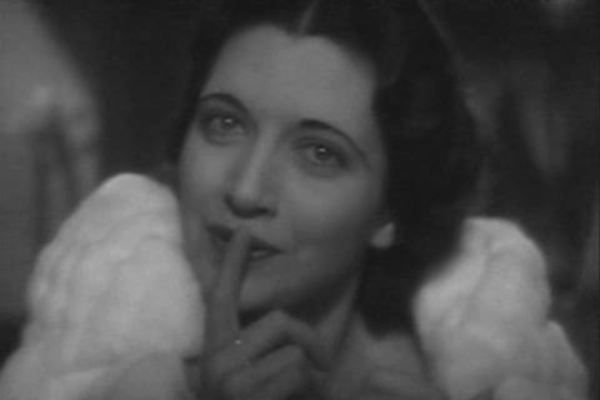
Kay Francis in Jewel Robbery
Phil Coldiron, critic
In what was, on both a global and a personal level, the most overwhelming year of my life so far, it was easy to see individual movies in the same way I saw myself: as a hopelessly small thing lost in a great big roiling world. It helped then that the two films that more or less bookended my cinema going this year—The Mother and the Whore (at Cinefamily in Los Angeles) and L'Amour fou (at Lincoln Center in New York)—weren't just monumentally long, they were images in response to a world as confused and crumbling as our own. While Rivette and Eustache stood as towering sentinels, and as spaces of painful refuge, the purest encapsulation of the smallness I felt in 2011 came fittingly in Laida Lertxundi's tiny masterpiece A Lax Riddle Unit. In an instant the grand California desert sky at sunset becomes a graceful excavation of the loneliness of an apartment becomes a vision of the city at night, seen from on high (in the hills of the neighborhood I left for New York in June). From the natural to the personal to the communal in eight minutes—a talisman to remember that the world needn't always feel so huge.
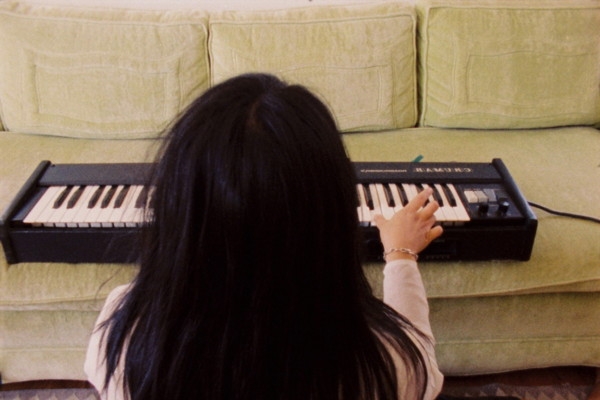
A Lax Riddle Unit
Robert Koehler, critic
Two moments in a year of several dozen festivals and several hundreds of films: First, in Jeonju in April, Ben Rivers's Slow Action had one of its first theatrical projections to a packed house after being presented as a three-screen gallery installation. Nothing else I saw this year indicated the future of cinema—and the future of futurist cinema—more than Rivers's deployment of ostensibly "documentary" images with an elaborate fiction on the soundtrack for an ironic, encyclopedic view of the great flows of human history, decay, and civilization. Second, in Vancouver in October, Nuri Bilge Ceylan's Once Upon a Time in Anatolia played—again to a packed house (its third in Vancouver that week)—and was, to my mind, an instant classic, and the clearest sign yet that a fine and promising filmmaker is now a great one. Ceylan uses Antonionian film grammar and Chekhovian sensibility for a full-bore narrative exploration of the dimensions of guilt, responsibility, and male identity in a world divided between ancient mores and bureaucratic modernity. Like the greatest films, it exceeds its own possibilities, alters one's notions of what cinema is capable, finds the universal in the specific, extracts humor from sadness, and re-perceives the relationship between bodies and space.
Alexander Horwath, director of Austrian Filmmuseum
I have seen several great works this year but the one dearest to my heart, because it concerns everything in our métier is this:
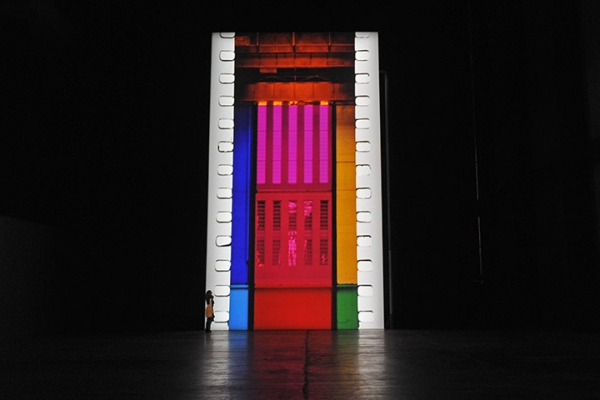
Tacita Dean, Film, 2011, installation view at Tate Modern
B. Kite, critic
Duration isn't what it used to be. The mere fact of being on film lent the gestures of earlier experimental filmmakers an intrinsic weight that seems to have evaporated with the omnipresence of cell-cams, flip cams, surveillance cams, computer cams, I dunno, cam cams? I think they put cameras in everything now. And that gives a lot of the newer durational work a kind of floating anxiety, a need to justify its existence, which usually finds expression in either a sense of intense strain (grandiose images composed unto death) or, at the opposite extreme, those soggy, shapeless lumps of space-time I've come to call "video bloat." So how unexpected and cool to come across Gina Telaroli's Traveling Light, a feature that demonstrates neither the hyper-consciousness of the first camp nor the apparent unconsciousness of the latter but instead maintains a remarkably composed comfort in its rhythms and objects of attention. A train trip from New York to Pittsburgh under brown mid-winter skies, past tract houses, snow scabs, and those deeply unmysterious piles of concrete somethings that always seem to crop up in the blank, functional spaces of America. It's hard to say whether the hanging melancholy is a state of mind or just an expression of the weather, but it rests at the center of the film and exerts a steady sweet-sad pull until the trip finally comes to terminus in one of the loveliest shots I've seen in digital.
Leo Goldsmith, critic
With more than half of the projection in the world gone digital and 35mm cameras a thing of the industrial past, many international filmmakers made a point this year of either gleefully eliding or blandly sentimentalizing the continuity of cinematic history from celluloid to digital. Far more interesting were those artists and works whose place between film and digital proved more awkward and indigestible, disrupting the techno-deterministic logic of the digital revolution and/or the death of film. Whether he likes it or not, UK avant-garde filmmaker Ben Rivers occupied a particularly ambivalent patch of middle ground this year. His '70s-style sci-fi quartet Slow Action, which splices 16mm landscape cinematography with curious cryptoethnographic simulacra and digital bibelots, retains much of its dense celluloid patina even when streamed online (courtesy of Animate Projects' website). But Two Years at Sea, Rivers's first feature, has proved a more indefinable object. His intimate, almost mythical portrait of beardy, taciturn recluse Jake Williams, who gleans among the rubble of Aberdeenshire's forests for what seems like the remnants of a forgotten civilization, Two Years at Sea is an avowedly analog film. Shot on 16mm and intended to be viewed in a 35mm blowup, due to happenstance the film has screened internationally in digital format, prompting much debate, complaint, and confusion about proper formats and artist's intentions. But while I'll be delighted to see the film in 35mm as soon as possible, the movie's digital iteration is nonetheless a fascinating document in its own right. A gorgeously constructed ode to a number of dying media and rarefied ways of life—scratchy vinyl, makeshift boatbuilding, neo-transcendentalist self-sufficiency—Rivers's work inadvertently embodies cinema's gawky transitional form in the grungy tactility of its final shot: a densely crepuscular image of Jake falling asleep, shot in near-blackness, marbled with a swim of pixelly artifacts and photochemical orbs and splotches. Intentionality aside, few images capture the physicality of decay and the awkward lurches of innovation so succinctly and so beautifully. ![]()
LATEST ARTICLES
-20140814-173707-thumb3.jpg)
Fighting Words
by Imogen Sara Smith
posted August 12, 2014

Fighting Words, Part 2
by Imogen Sara Smith
posted August 20, 2014

On the Margins: The Fil…
by Andrew Chan
posted August 12, 2014

Robin Williams: A Sense…
by David Schwartz
posted August 12, 2014
 Moments of 2011, Part 2
Moments of 2011, Part 2
KEYWORDS
Museum of the Moving Image | music video | Edward Yang | independent cinema | Hollywood | documentary | silent film | Once Upon a Time in Anatolia | Drive | experimental film | Slow ActionRELATED ARTICLE
Moments of 2008, Part 1 by Various WritersMoments of 2008, Part 2 by Various Writers
Moments of 2009 by Various Writers
Moments of 2010 by Various Writers
Moments of 2011, Part 1 by Various Writers
More: Article Archive

